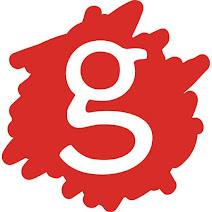 |
| Not the book I remember, but a gorgeous one nonetheless |
Yesterday morning, Tweeter Colleen Lindsay started a mini hashtag movement of gratitude among readers and writers with "It's Thanksgiving; which writers or books are you thankful for? Share with Twitter! Use
Book-loving Twits responded with things like: "Thankful for my hometown library's Hardy Boys collection" (Galley Cat), "C.S. Lewis & Narnia made a reader out of me" (Laura Miller), "
My thanks-giving was: "
Thinking of this book brought back memories of the days, circa 1968, when I would walk from my brick home on Arch Street in Kittanning to the Armstrong County Public Library. At the time, it was less than two blocks away, just down the hill near the east bank of the Allegheny River. I held my mother's hand, skipping ahead, pulling her along the sidewalk, impatient to get to the House of Books. The library was built in 1860 and had Italianate-style white columns at the front entrance. From my small perspective, it was huge--high ceilings, an imposing front desk which one approached like a royal throne, and, along dark passageways behind the desk, towering shelves full of books (adult books) which would someday be mine once I mastered the English language.
On this one day in my memory, I went to the children's section--just to the left of the front entrance, flooded with sunshine from tall windows--and found a book which would be the cornerstone of my entire life. Of course, I didn't know that at the time. Back then, it was just a book with interesting people in funny costumes.
The name of the book and the author are lost to me now, but I do have a very strong sense of the book as a physical property. It had no dustjacket and the cover (or, "boards") of the book had the fine-grained weave of a painter's canvas. It was the color of salmon, of crushed berries, of raw venison meat. Inside, each page had a photo of Pilgrims--suffering persecution in the Old World, sailing on the Mayflower, stepping onto Plymouth Rock, exchanging handshakes with what the book called Indians, walking across fields with dead deer collared over their necks, sitting at a long wooden table groaning under the weight of food.
In truth, maybe the book had none of these pictures. The one I do remember is a photo of a man encased in conquistador armor, his head lifted as he looks at a distant horizon. For whatever reason, that image is seared in my memory and I am certain of nothing else but this. The fact that these were color photographs and not painted or hand-drawn illustrations must have really fucked with my young, malleable mind. I was five years old and here, right here in this book on my lap, was photographic proof of Pilgrims! The authority of this printed and bound book convinced me they had cameras back in 1621. It took years of primary and secondary education to convince me otherwise.
This half-remembered, forgotten-titled book is an important landmark in my reading life because it is the first book I recall checking out of the library, taking home, and--for two weeks--feeling like I possessed the words and the photos between the covers. My mother had been reading to me for years and I had probably learned to start "reading on my own" around the age of 4. But this book, this story of Thanksgiving with its photos of faux-Pilgrims, was different because I claimed ownership of the words.
I have owned them--thankfully, gratefully--ever since that morning in the high-ceilinged, dust-moted air of the Armstrong County Public Library. Nothing of this life I now know would have taken shape if it weren't for those first pieces falling into place: the skipping walk with my mother, the beautiful authority of those white columns, the reverent hush of the air inside the building, the sunlight falling on the spine of this particular book, the librarian rubber-stamping the due date in blue ink inside the front cover, and the two weeks I spent with the Pilgrims as they found a new world.
 |
| The Kittanning Library. It, like me, is now a historical landmark. |













David: I didn't realize you started out in Kittanning. I grew up nearby in Butler and spent many young hours in the public library, frequently sneaking upstairs into the adult department from the children's section, when L. Frank Baum and his successors' Oz fantasies could not quench my desire for new worlds and fantastic adventures! I happen to be in western PA now actually for the Thanksgiving weekend! Nice to know we have yet another connection! (in addition to a great enjoyment and appreciation for books!)
ReplyDelete